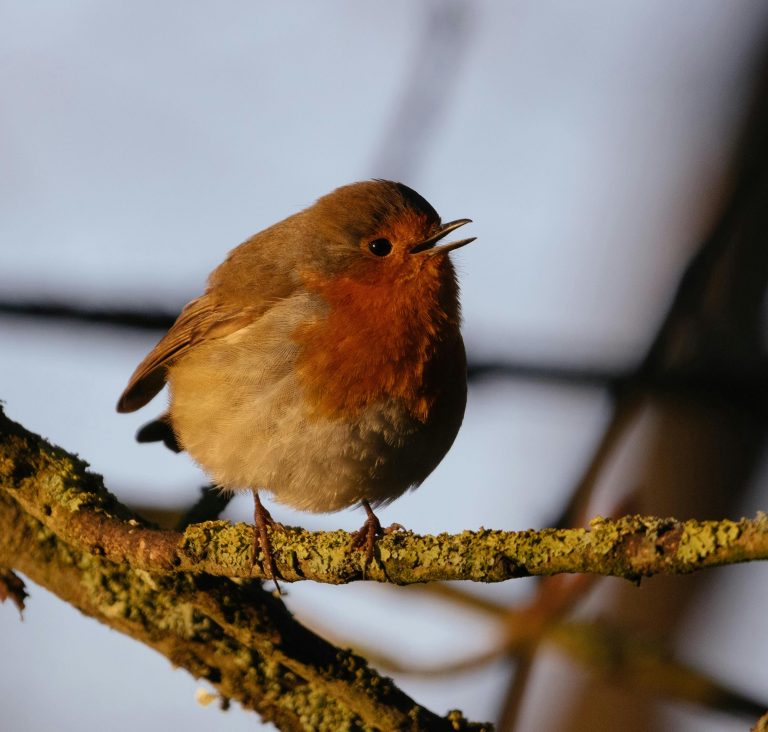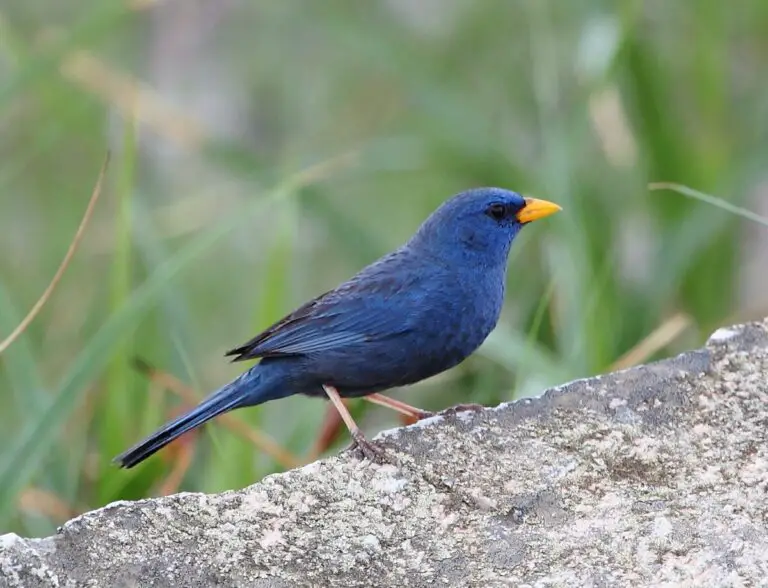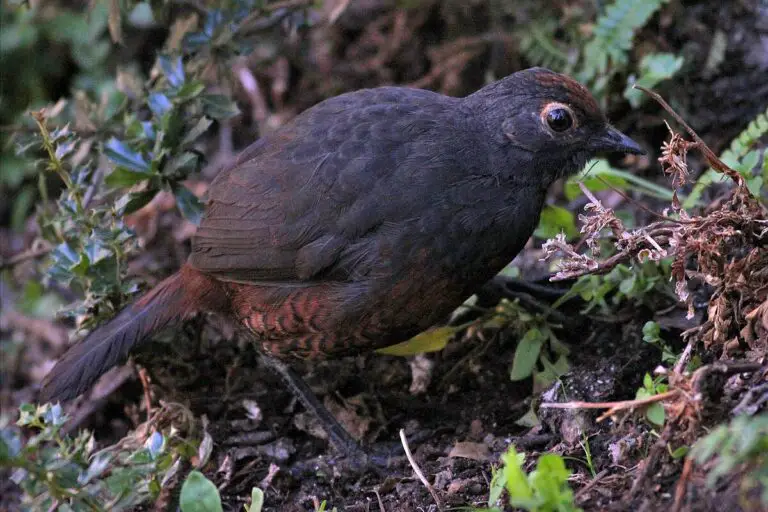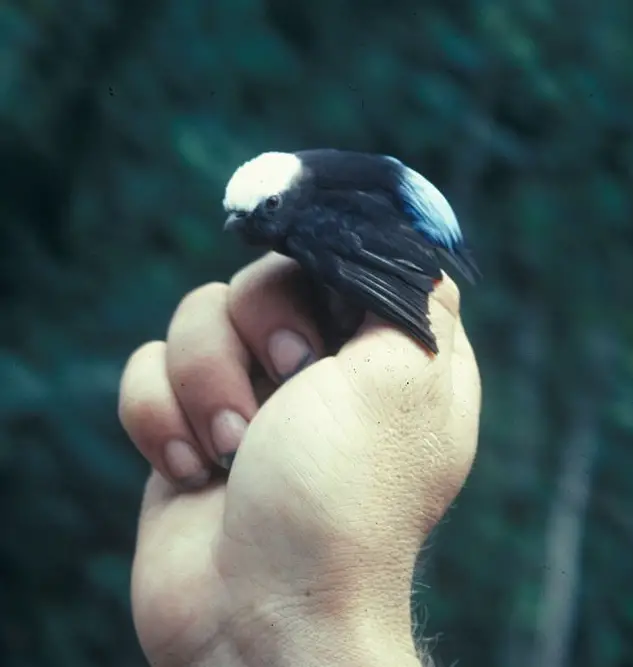Lion (Panthera Leo)
“Lives in small groups called prides!”
Scientific Classification of Lion
- Kingdom: Animalia
- Phylum: Chordata
- Class: Mammalia
- Order: Carnivora
- Family: Felidae
- Genus: Panthera
- Scientific Name: Panthera leo
Conservation Status
- Status: Vulnerable
Habitat and Distribution
- Locations: Lions are primarily found in Africa and also exist in some parts of Asia.
The lion, scientifically known as Panthera leo, belongs to the Animalia kingdom, Chordata phylum, Mammalia class, Carnivora order, Felidae family, and Panthera genus. While they were once widespread across various regions, lions are now primarily found in Africa and parts of Asia. However, they are classified as vulnerable due to habitat loss, human-wildlife conflict, and poaching.
Lion Facts
Prey
- Primary Prey: Antelope, Warthog, Zebra
Young
- Name of Young: Cub
- Gestation Period: 110 days
- Average Litter Size: 3
- Age of Weaning: 6 months
Group Behavior
- Group Name: Pride
- Group Size: Lives in small groups called prides!
Habitat and Diet
- Habitat: Open woodland, scrub, grassland
- Diet: Carnivore
- Lifestyle: Diurnal/Nocturnal
Population and Conservation
- Estimated Population Size: 23,000
- Biggest Threat: Habitat loss
Physical Characteristics
- Color: Brown, Gold, Tawny, Blonde
- Skin Type: Fur
- Distinctive Feature: Long and thick hairy mane of the male around the face
- Weight: 120kg – 249kg (264lbs – 550lbs)
- Length: 1.4m – 2.5m (4.7ft – 8.2ft)
- Top Speed: 35 mph
- Lifespan: 8 – 15 years
- Age of Sexual Maturity: 2 – 3 years
Lions, known scientifically as Panthera leo, are majestic creatures found primarily in sub-Saharan Africa. They live in small groups called prides and prey on animals such as antelope, warthogs, and zebras. Lions are carnivores, with a gestation period of 110 days and an average litter size of 3 cubs. Despite their strength and beauty, lions face threats from habitat loss, yet their estimated population size is around 23,000. With distinctive features like their long and thick manes, lions are iconic symbols of the African savanna.
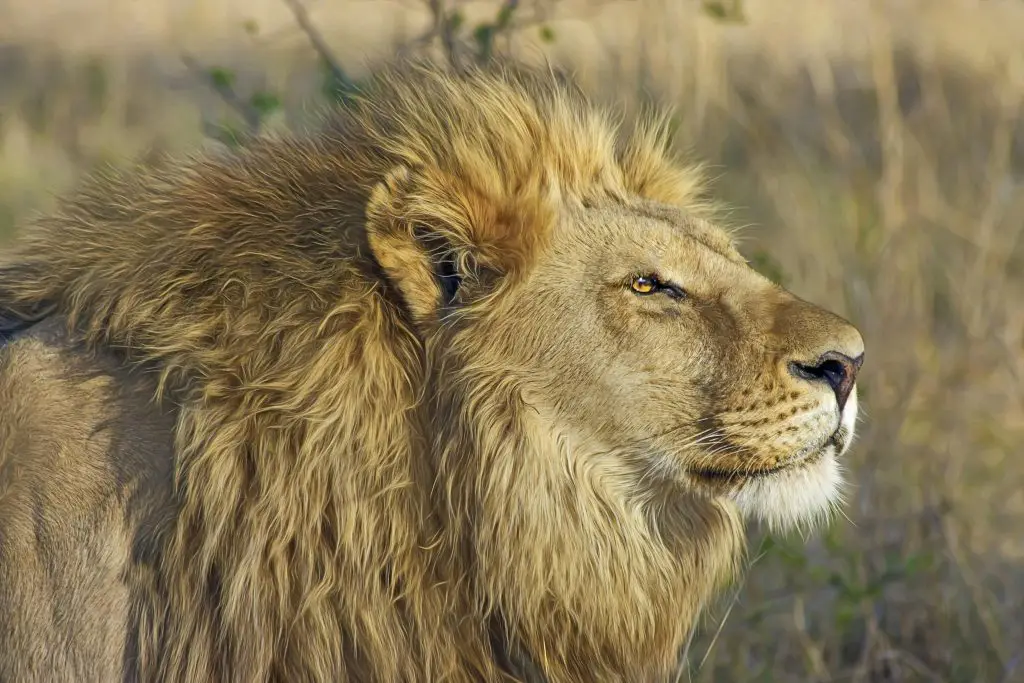
Scientific Name and Classification
Lion Scientific Classification
Scientific Name:
- Genus: Panthera
- Species: Panthera leo
Origins of Scientific Name:
- Panthera: Greek origin, encompasses big cat species capable of roaring, including lions, tigers, jaguars, and leopards.
- Leo: Latin word for lion.
Subspecies:
- Panthera leo melanochaita: Found in South and East Africa.
- Panthera leo: Found in West Africa, Central Africa, and Asia.
Classification Revision:
- Until 2017, lions were classified into two subspecies: African and Asiatic lions.
- Scientists reclassified lions in 2017.
The scientific name for lions, Panthera leo, reflects their membership in the Panthera genus, known for big cat species capable of roaring. Lions are further classified into subspecies, including Panthera leo melanochaita and Panthera leo. While traditionally categorized as African and Asiatic lions, a reclassification in 2017 altered this classification scheme.
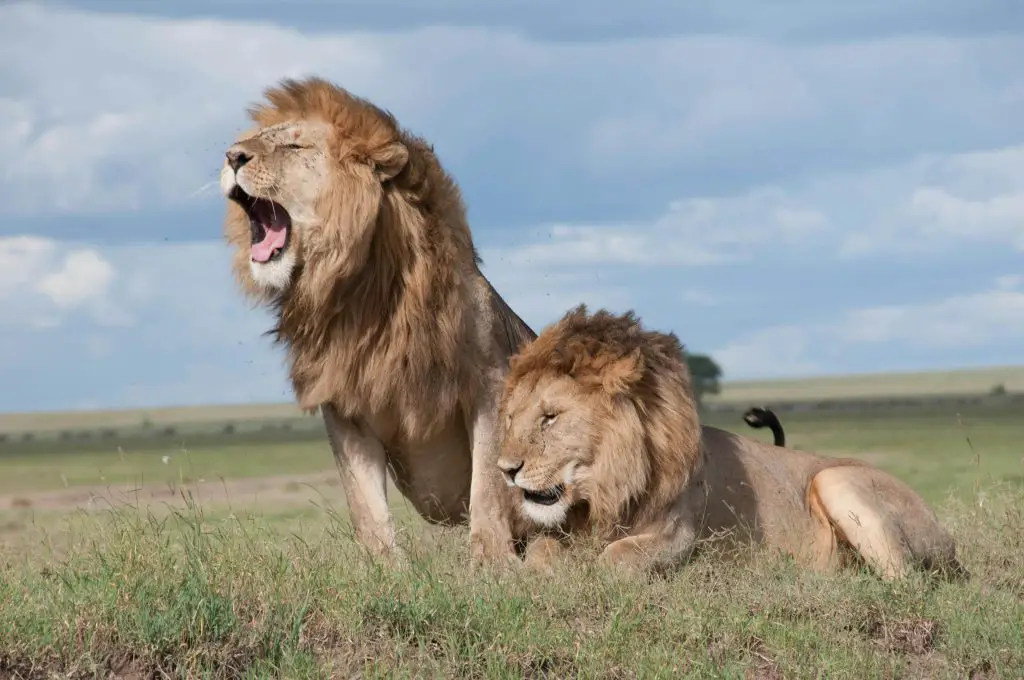
Evolution and Origins
Evolutionary History of Lions
Ancestral Roots:
- Lions, like most members of the cat family, are believed to have descended from a common ancestor known as the Proailurus Lemanensis, or “first cat.”
- Proailurus Lemanensis was a cat-like creature that roamed the earth nearly 25 million years ago.
Early Appearance:
- Fossil evidence indicates that the earliest lion-like cat appeared in Laetoli, Tanzania, in East Africa during the Late Pliocene period, approximately 5.0–1.8 million years ago.
Geographic Evolution:
- Genetic studies suggest that lions evolved in eastern and southern Africa, gradually adapting to their environments over time.
The evolutionary history of lions traces back millions of years to a common ancestor known as the Proailurus Lemanensis. Fossil evidence indicates their early presence in East Africa, with genetic studies suggesting an evolutionary progression in eastern and southern Africa. Lions have evolved and adapted to various environments, shaping their anatomy and behavior over time.
Incredible Lion Facts!
- African Big Five: Lions are considered one of the “African Big Five,” alongside elephants, rhinoceroses, leopards, and buffalo, representing Africa’s most iconic and sought-after wildlife.
- Record-breaking Size: The largest lion ever recorded weighed 690 pounds and was shot in South Africa in 1936. Ancient lions were even larger, reaching up to 1,153 pounds!
- Population Decline: Between 1993 and 2014, the International Union for Conservation of Nature (IUCN) estimated a 42% decrease in lion populations. Poaching and habitat loss have contributed to the decline, with fewer than 20,000 lions estimated to remain today.
- Social Structure: Lions are generally social animals, with prides typically consisting of 80% females. As a result, only about one in eight male lions survive to adulthood. Groups of male lions may band together, controlling vast territories. One group in South Africa’s Kruger National Park controlled over 170,000 acres and was estimated to have killed more than 100 rival lions and cubs.
- Zoo Presence: Lions have a long history of captivity, with records dating back to 18th century England. The Tower Menagerie, precursor to the London Zoo, charged three pence for admission, offering the gruesome spectacle of feeding cats or dogs to the lions.
Lions, integral to Africa’s wildlife heritage, face significant challenges due to habitat loss and poaching. Despite their social structure and historical presence in captivity, wild lion populations have experienced a dramatic decline in recent decades. Efforts to protect and conserve these majestic animals are critical for their survival and the preservation of biodiversity.
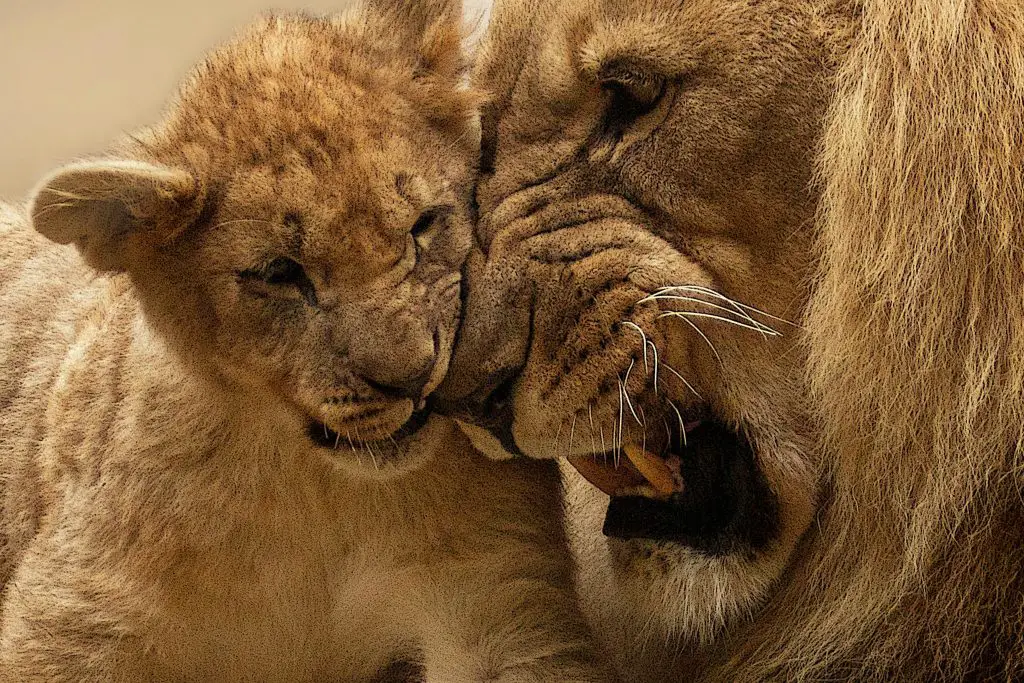
Anatomy and Appearance
Lion Physical Characteristics
- Coat: Lions have a short coat of tawny or golden fur with faint markings, helping them blend into their grassland habitats when stalking prey.
- Tail: Their tails have a tuft of longer fur at the end.
- Jaws: Lions possess powerful jaws with 30 teeth, including four fang-like canines and four carnassial teeth designed for slicing through flesh.
Mane
- Distinctive Feature: One of the largest cats in the world, male lions are taller and heavier than females and sport a mane of long hair around their faces. This mane is unique in the feline world, where males and females typically look similar.
- Variety: The mane’s color ranges from blonde to red, brown, and black, covering the head, neck, and chest. It is thought to be connected with testosterone levels.
White Lions
- Mutation: Some lions exhibit an uncommon color mutation resulting in extremely pale coats. Unlike albino animals, white lions are caused by recessive traits, not a lack of color pigments.
- Captivity: Due to their rarity, white lions were captured and moved into captivity in the second half of the 20th century.
- Conservation Efforts: Today, white lions are bred in zoos and wildlife parks, with successful reintroduction efforts in South Africa. Breeding and hunting in their native environments, white lions contribute to conservation efforts for their species.
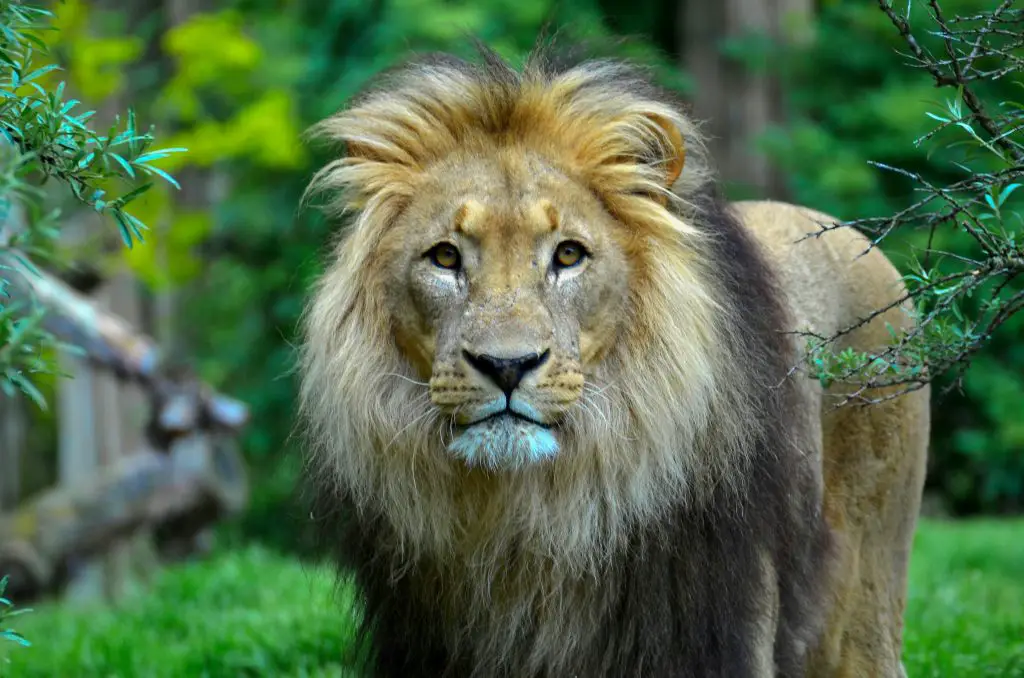
Distribution and Habitat
- Historical Range: Lions historically inhabited vast areas of Africa, Europe, and Asia.
- Current Range: Today, lion populations are restricted to isolated pockets of their once extensive range. African lions are primarily found in sub-Saharan African countries, while Asiatic lions inhabit a remote part of the Gir Forest in India.
- Adaptability: Despite their dwindling numbers, lions are highly adaptable animals, capable of thriving in various environments, including very dry climates. They obtain most of their moisture from their prey.
- Preferred Habitat: Lions prefer habitats with open woodland, scrub, and long grasslands. These areas provide ample cover and a diverse range of prey. They typically avoid rainforests and extreme desert environments.
Population – How Many White Lions Are Left?
Lion Conservation Status and Historical Range
- Population Decline: Between 1993 and 2014, lion populations decreased by 42%. The IUCN estimates the current adult population to be between 23,000 to 39,000 mature individuals.
- Conservation Status: Lions are listed as “Vulnerable” on the IUCN Red List, indicating a high risk of endangerment in the wild.
- African Lions: While the population of African lions likely exceeds 20,000 individuals, Asiatic lion populations are estimated to number just 600.
- Habitat Loss and Hunting: Lions face threats from habitat loss and hunting, contributing to their declining numbers.
Historical Range and Extinct Lion Species
- Barbary Lion: Once inhabited North Africa from Egypt to Morocco, the Barbary lion was hunted to extinction in the 19th century. It is now regionally extinct in North Africa.
- Cape Lion: Native to South Africa, the Cape lion had a darker mane than other populations. The last lion in its range was documented in 1858.
- Cave Lion (Panthera leo spelaea): Extinct around 12,000 years ago, the Cave lion inhabited Eurasia and Alaska. It was larger than modern lions, with frozen cave lion cubs discovered in Russia’s permafrost.
- American Lion (Panthera leo atrox): Extinct around 12,000 years ago, the American lion roamed across most of the modern-day United States and Mexico. It was the largest lion species, hunting large mammals like bison, deer, and mammoths.
Behavior and Lifestyle
- Pride Structure: Lions live in strong social groups called prides, consisting of 5-15 related females and their cubs, along with one or a few male lions. Male lions patrol territories of around 100m², marking with urine and roaring to warn off intruders.
- Male Dominance: Male lions defend the pride against intruders but face constant threats from other males seeking to take over their territory. Intruding males may kill cubs sired by previous males.
- Hunting Dynamics: Despite their size, male lions do little hunting as they are slower and more easily seen. Lionesses in the pride hunt together, utilizing teamwork to catch faster and larger prey.
- Hunting Success: Group hunting enables lionesses to be more successful in catching prey, even animals larger and faster than them. This cooperative strategy increases their hunting efficiency.
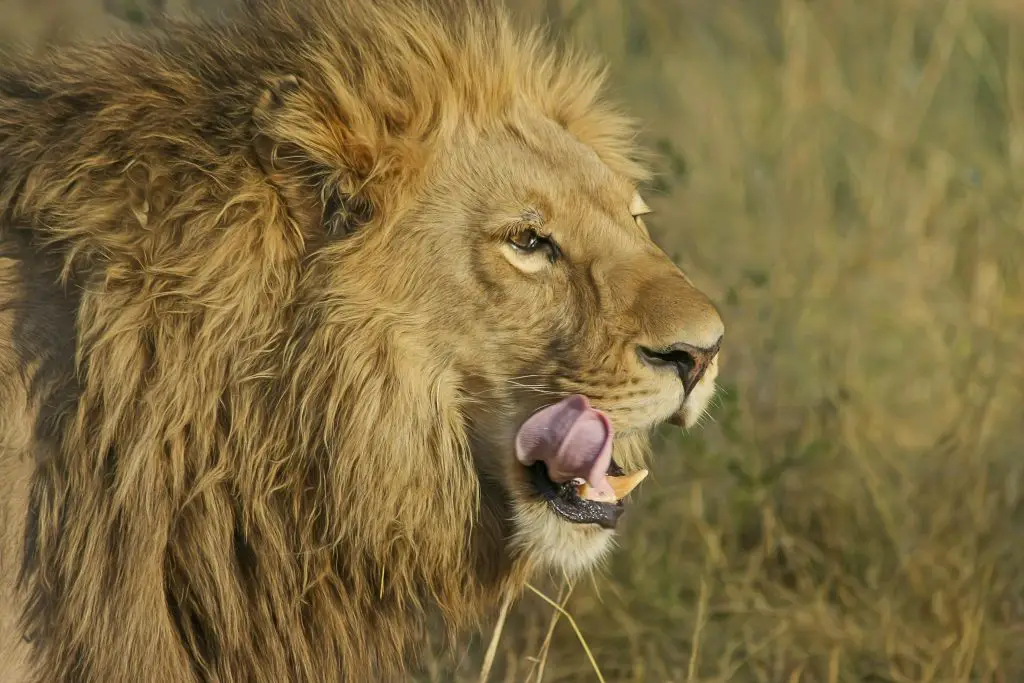
Roar
Lion roars are among the loudest sounds produced by any big cat, reaching volumes of around 114 decibels. This is comparable to the volume of a chainsaw or a rock concert, and is loud enough to breach the pain threshold of human hearing. The roar of a lion is not just impressive in volume; it can be heard from a distance of about 5 miles (8 kilometers), making it an effective tool for communication over long distances.
The remarkable loudness of a lion’s roar is attributed to unique adaptations in their vocal folds. Unlike other cats, lions have a square-shaped vocal fold ligament. This anatomical feature allows their vocal folds to withstand strong lung pressure and produce loud, deep sounds. These vocalizations serve several purposes:
- Territorial Defense: Lions use their roars as a warning to other males and to assert dominance over their territory. The roar communicates strength and presence, deterring potential intruders.
- Pride Coordination: Roaring helps pride members stay in contact with each other. Given that prides can be spread out over large areas, the ability to communicate over long distances is crucial for maintaining social bonds and coordination, especially during hunting or in case of threats.
The combination of these adaptations ensures that lions can effectively use their roars for both defense and social cohesion, making it an essential aspect of their behavior and survival strategy.
Reproduction, Cubs, and Lifespan
Both male and female lions can reproduce between the ages of two and three, but breeding often occurs only after a pride has been well-established. This delay ensures a more stable environment for raising cubs. Female lions undergo a gestation period of nearly four months before giving birth to litters ranging from one to six cubs. These cubs are born blind and highly vulnerable, relying on their mother and the camouflage provided by their darker, spotted fur to stay safe in their den while the adults hunt.
Despite these precautions, lion cubs face a high mortality rate. Less than half survive their first year, and four out of five do not make it to two years old, commonly due to animal attacks or starvation. However, the communal nature of lion prides helps improve cub survival. Females in the pride often synchronize their births and cooperate in suckling and caring for each other’s young, providing a supportive network for raising cubs.
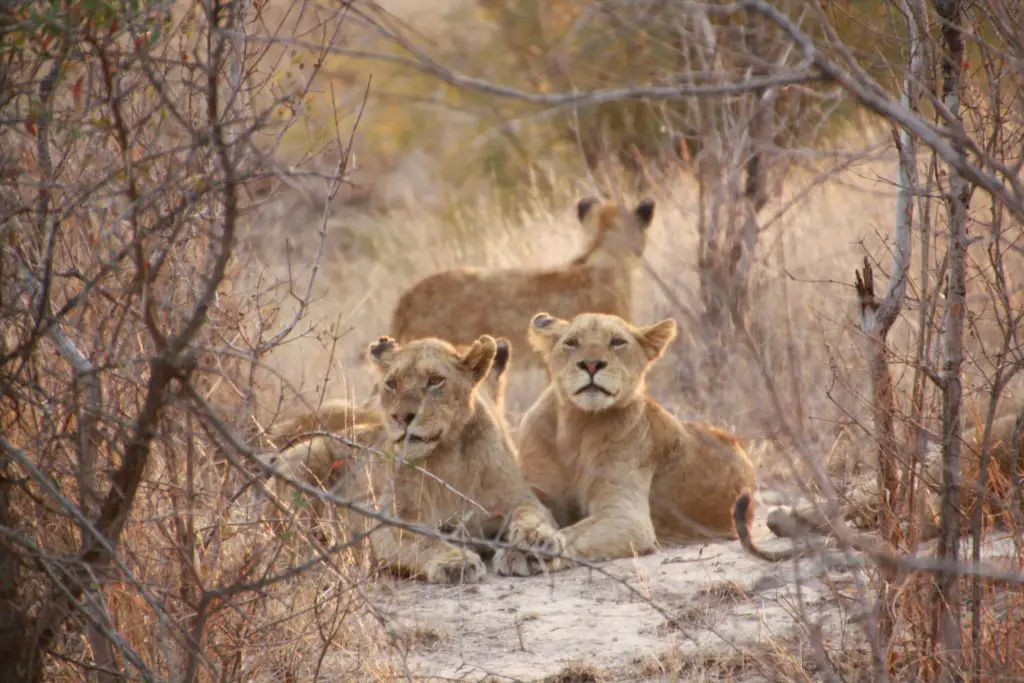
Lion cubs nurse on their mother’s milk until about six months of age but start consuming meat around 12 weeks. While they won’t begin hunting actively until they’re about a year old, these early experiences with meat are crucial for their development.
Lions generally live for about 10 to 15 years in the wild, but their lifespan can extend significantly in captivity due to better living conditions and medical care. For example, in 2016, the Philadelphia Zoo had to euthanize a 25-year-old female lion due to age-related mobility issues, highlighting the potential for extended lifespans in managed care environments.
Diet and Prey
Lions are large, carnivorous animals that rely exclusively on hunting other animals for sustenance. Their diet includes a variety of prey such as buffalo, wildebeests, giraffes, gazelles, zebras, warthogs, and various antelope species. Lions often follow herds across the open grasslands, adapting their hunting strategy to the availability of prey in their territory.
Lions are known for their opportunistic feeding habits and will hunt alone if necessary, even stealing kills from other predators. Once a kill is made, the feeding hierarchy comes into play. Male lions eat first, followed by the females, and the cubs are left with the leftovers. This hierarchy ensures the dominant males, who protect the pride, remain strong and healthy.
Unlike most other big cats, lions are social hunters. Lionesses work together in coordinated groups, each playing a strategic role in the hunt. This cooperation enables them to take down prey that are faster and larger than themselves. The effectiveness of this teamwork is evident in hunting success rates: while individual lions have a success rate of 17-19%, group hunts see this rate increase to 30%.
On average, lions consume about 17 to 20 pounds (8 to 9 kg) of meat per day. However, males are capable of eating up to 100 pounds (43 kg) in a single day, while females can consume up to 55 pounds (25 kg). This voracious appetite supports their energy needs and helps sustain their muscular build and active lifestyle.
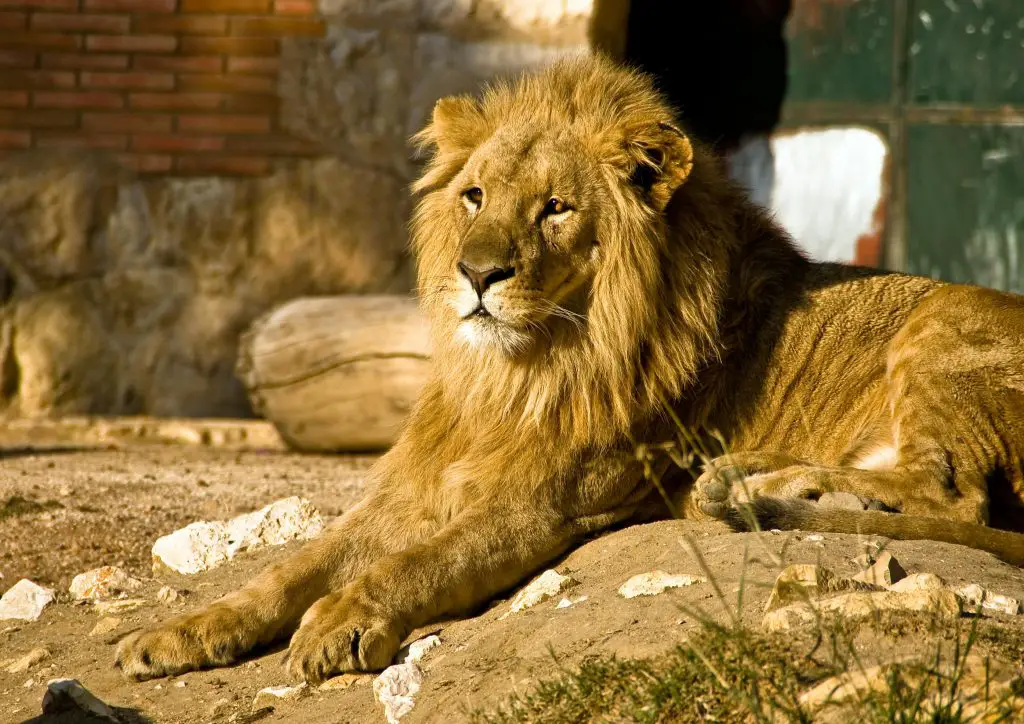
Predators and Threats
Lions are the apex predators of their environment, facing few threats from other animals. However, they do encounter dangers, particularly from hyena packs, which can inflict fatal damage when competing for food. Additionally, some large herbivores, such as giraffes and elephants, can fatally injure lions to defend themselves or their young.
The most significant threat to lions comes from within their own species. Territorial disputes between male lions often result in deadly fights. In South Africa’s Sabi Sands, a coalition of male lions is believed to have killed over 100 lions across a vast territory of 170,000 acres. Male lions seizing control of a pride will commonly kill the cubs to ensure only their genes are propagated.
Disease also poses a threat to lions. Between 1993 and 1997, over 1,000 lions died from canine distemper, a disease transmitted by hyenas from wild dogs.
Relationship with Humans
The greatest threat to lions, however, is human activity. Historically, lions have been hunted for trophies, and in contemporary times, they face habitat loss due to expanding agriculture and urban development. This encroachment has drastically reduced their natural range.
While lions do not typically see humans as prey, they have been known to enter villages in search of food. These interactions sometimes lead to attacks, with lions responsible for up to 700 attacks on humans annually and around 100 fatalities per year in Tanzania alone. A notable historical example is the Tsavo lions in Kenya, which killed and ate over 130 railroad workers in 1898.
Despite being admired and feared by humans for centuries, lions are now endangered due to human activities. Conservation efforts are crucial to ensuring their survival in the wild.
3 more lion facts
To learn more about these magnificent creatures, be sure to read our full lion facts page. Here are some additional incredible facts about lions:
Young Lions Practice Hunting by Role-Playing
Lion cubs spend much of their time playing together, which helps them develop essential hunting techniques. This role-playing also allows female lions to observe and determine which cubs are better suited for specific roles in hunting, such as chasing and cornering prey or catching and killing it.
Lions Have Small Hearts and Lungs and Rely on Stealth and Teamwork
Lions are built for short bursts of intense activity rather than long chases. They have large paws with soft pads and sharp retractable claws that aid in running, climbing, and catching prey, and also serve as effective defense mechanisms. Their feet and leg structure enables them to jump distances over 10 meters. Despite their powerful build, lion hearts weigh about 1,175 grams, relatively small compared to the herbivores they hunt. This means lions can only exert themselves for short distances and must rely on stealth and teamwork to get close to their prey before initiating the hunt.
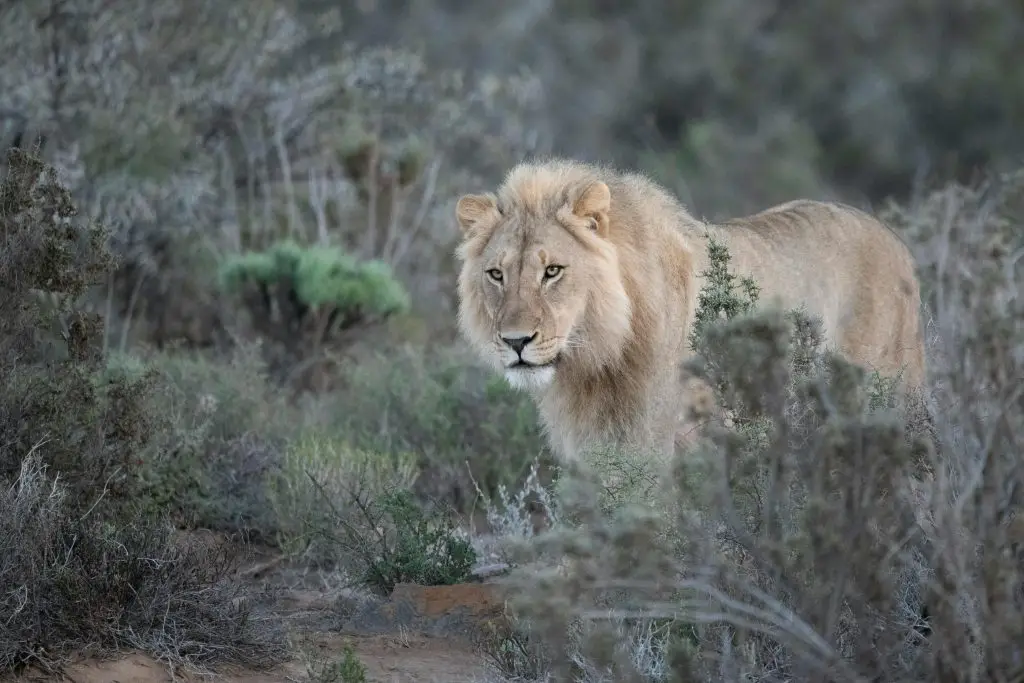
The World’s Most Famous Lion Survived a Plane Crash
One of the most iconic lions is the roaring lion at the start of MGM studio films. In 1927, MGM flew their mascot across the country for publicity, but the plane crashed during a flight from San Diego to New York. Remarkably, the lion survived the crash, adding to its legendary status.
Final Thoughts
Lions are remarkable apex predators known for their powerful roars, social hunting strategies, and complex social structures within prides. Despite their dominance, they face significant threats from humans, disease, and intra-species conflicts. Their role in the ecosystem, combined with their cultural significance, underscores the importance of conservation efforts to protect these majestic creatures and ensure their survival in the wild.
